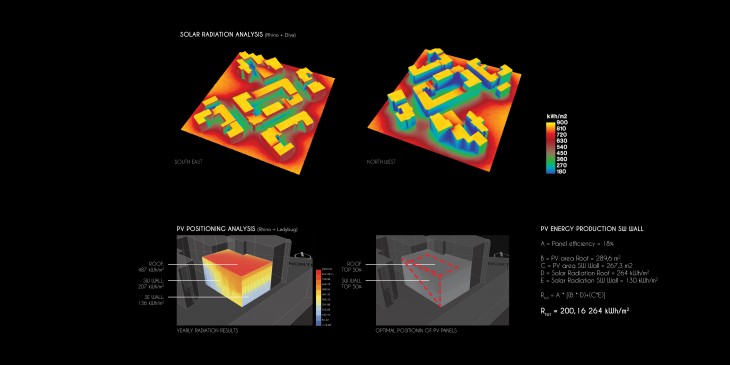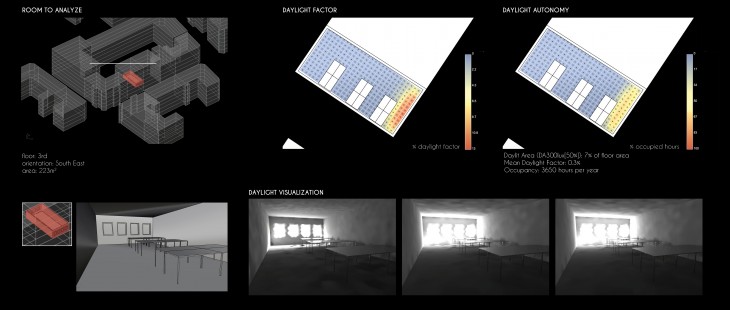
Study of an urban site in Oslo, Norway evaluating environmental conditions and outlining energy performance criteria.
Basic climatical conditions
Dry bulb temperature
Annualy, fluctuations in dry bulb temperatures are not too extreme. Summer average temp. between 19 to 20 °C, though temperatures between 25-30 °C occurs on many days of the summer. In winter, average temperatures are between ?3 to 3 °C and rarely drops below -10 °C. Temperature is below comfort temperature during the majority of the year, highlighting the need for heating during large periods of the year. When looking at daily temperature fluctuations for each month of the year its clear that the big temperature differences between day and night occur during summer, a typical feature in northern latitudes. It is also worth noting the general low solar radiation throughout the year, also typical of northern latitudes. In this climatethe peak energy demand is during winter, when demand for space heating is at its highest. In this period solar radiation received amounts to very little, raising questions as to the efficiency of PV panels.
Wind
The yearly prevailing wind direction is East-Northeast. Though not shown in the diagram to the right, this direction prevails in the winter months while summer months are dominated mainly by westly directions. This is important because in cold climates like this it is reducing cold winter winds that becomes the primary objective.
Solar Radiation
When looking at the sun path diagram the first notable factor is the very low sun angles during winter time, during December, the sun altitude is below 10° during most of the day, highlighting the need for glare control, especially in office environments. During the same period, the extremes in azimuth are also low, ranging between 135° and 225°. This means that daylight during winter months is scarce (about 6 hours daily). Similarly, summer days are long, with around 18 hours of daylight at summer solstice.
Generally, the annual intensity of the solar radiation is low compared to more southern locations. This does not get better by the fact that the peak energy demand corresponds with the time of year with the lowest solar incidence. Generally, due to the low total incidence, even in summer months overheating is a minor issue in this climate, with the exception of office buildings where internal heat gains from electronic equipment largely offsets the energy balance, generating a need for cooling.
Site Analysis

Due to the low solar altitude during large periods of the year, much overshadowing occurs, especially between buildings. These same low altitudes highlight the need for glare control, particularly in office environments. Daylight hours during winter time are few, meaning that special care should be taken to ensure sufficient interior daylight in this environment. During summertime both temperatures and solar radiation is not extreme, meaning that overheating is not generally considered a problem. An exception is office environments in which internal heat gains from office appliances may lead to overheating.
Solar Radiation and PV study

Daylight Study

Environmental Performance Analysis is a project of IaaC, Institute for Advanced Architecture of Catalonia developed at Master in Advanced Architecture in 2016 by:
Students: Peter Geelmuyden Magnus
Faculty: Spyros Stravoravdis